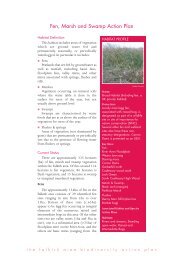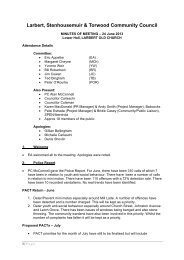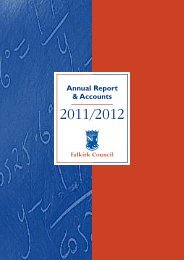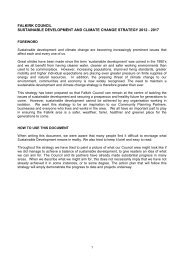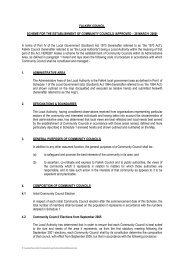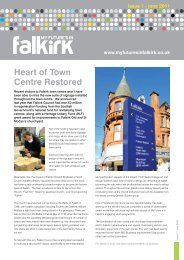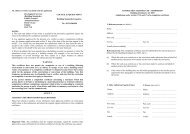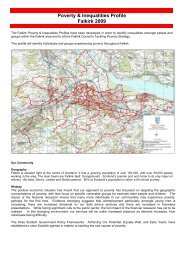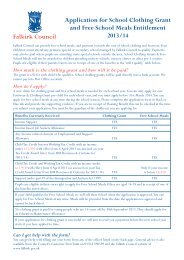EQUALITY IMPACT ASSESSMENTS 2010 - Falkirk Council
EQUALITY IMPACT ASSESSMENTS 2010 - Falkirk Council
EQUALITY IMPACT ASSESSMENTS 2010 - Falkirk Council
Create successful ePaper yourself
Turn your PDF publications into a flip-book with our unique Google optimized e-Paper software.
What data is available to facilitate the screening of the policy? Note: Gathering of<br />
information/evidence can include community consultation, research (including<br />
websites), Officer knowledge/experience, Equalities monitoring data, service user<br />
feedback (including complaints) and partner agency feedback.<br />
The screening of the policy took into account the following:<br />
1. All Tenure Local House Condition Survey of the <strong>Falkirk</strong> Area (2009) carried out on basis of<br />
a 3% sample.<br />
2. Community Consultation Data which included a Focus Group, Survey of Disabled<br />
People/their carers and survey of private households and identified groups (Appendix 1).<br />
Further details of the consultation process and feedback are included through the EQIA.<br />
Is there any evidence of higher or lower uptake or exclusion by any of the equality<br />
strands? Note: A broad interpretation should be taken of the word 'evidence'. It should<br />
include anecdotal evidence and evidence derived from qualitative or quantitative<br />
analysis where available.<br />
The current Grants application form (previously prescribed by ministers) for repair and<br />
adaptations, does not ask for equalities data.<br />
Equalities data was collected for all three aspects of the consultation. The Scottish<br />
Government’s recommended questions for disability gender and age, and the revised Census<br />
ethnicity classifications were used. The comparison between the 2001 Census data and<br />
respondents to the consultation were as follows:<br />
<strong>Falkirk</strong> Area (2001 Census):<br />
Ethnicity - 99.19% of the population were White Scottish, Other White British or White Irish.<br />
Age – under 44 – 59.67%, 45-59 – 19.56%, 60-74 – 14.02%, 75+ - 6.76%<br />
Disability – 21.19% had a limiting long term illness and 7.9% had an economic status of<br />
permanently sick or disabled.<br />
Gender – Male – 48.2%, Female, 51.8%<br />
Respondents to Adaptations Focus Group:<br />
All participants considered themselves to have a limiting long term illness or disability. Whilst<br />
a variety of age ranges and ethnic groups were invited, no ethnic minorities or younger age<br />
groups were present. The average age of participants was 73, with 4 female and 2 male, 1<br />
unrecorded. Participation was widened through the survey as follows:<br />
Respondents to Adaptations Survey:<br />
Those that supplied equalities information were comprised as follows:<br />
Ethnicity - 32 classified themselves as white Scottish or white British. 3 respondents<br />
(representing around 9% of respondents) can be considered to be ethnic minorities (White<br />
Polish; Pakistani, and Other Ethnic Group (Scottish & North African)).<br />
Age -<br />
On behalf of<br />
child under 16



